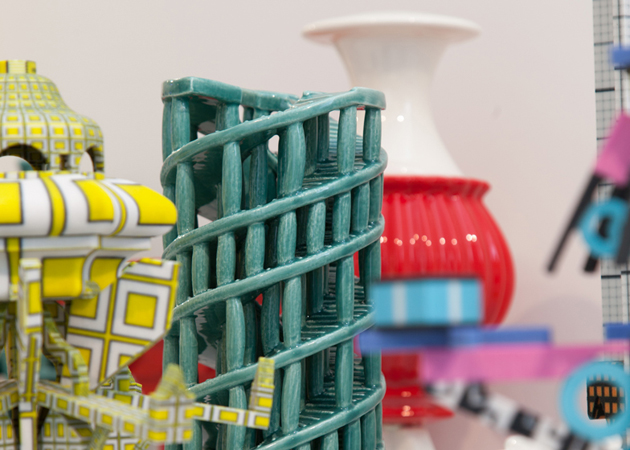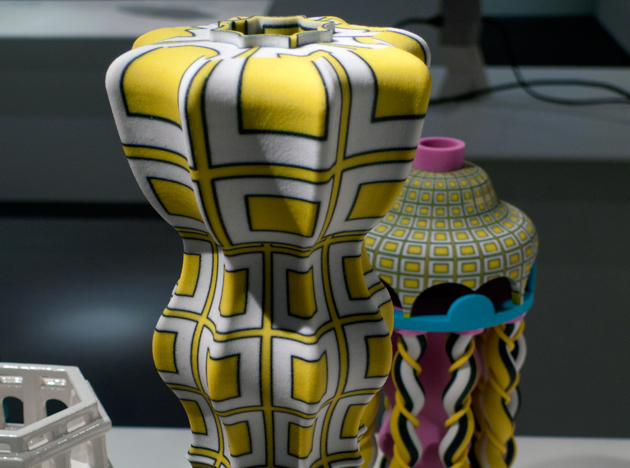It is quite unusual to think about ceramic as a mean to tell a story. Can we conceive a proper narrative dimension inside a vase collection? Can we see it as an uncommon tool of introspection? If we take for granted that objects have their own language characterized by a specific semantic and syntax, we may be more reluctant to believe that they can be transformed into the vehicle of a fictional self-representation.
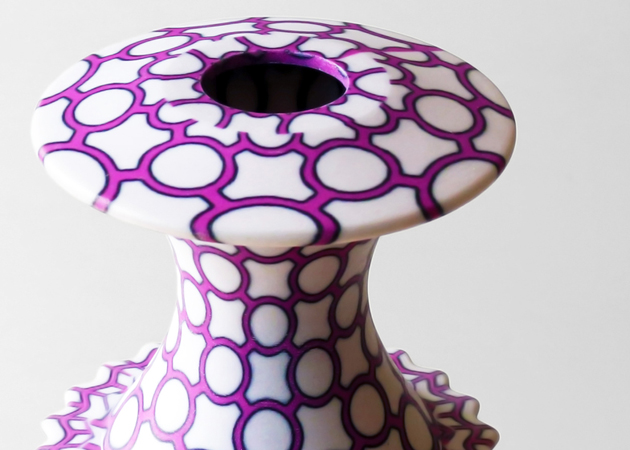
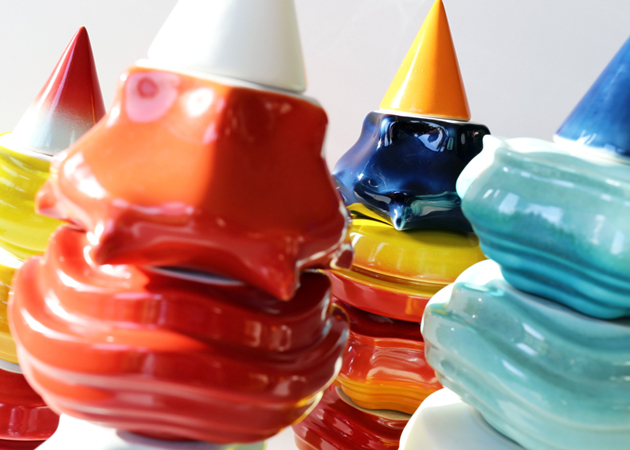
Adam Nathaniel Furman, designer in residence at London Design Museum in 2013, has pushed the limit further trying to express through his creations the variable shadows of his moods and thoughts. The tangible result of his research is an original ceramic collection that transposes his personal obsessions – technological compulsiveness, kitsch, human-driven disasters, convulsed techno and joyous angelic jubilations- into a fluid overlapping of layers and concentric stairs. The intangible dimension, on the other hand, is entrusted to the pages of his digital personal journal entitled Identity Parade, a hypnotic flux of consciousness where he gets himself over a barrel, revealing his bittersweet, fluctuating emotions. The link between these two dimensions is more than deeply interconnected: the physical and the digital worlds share the same ups and downs, the same soarings, the same sinkings.
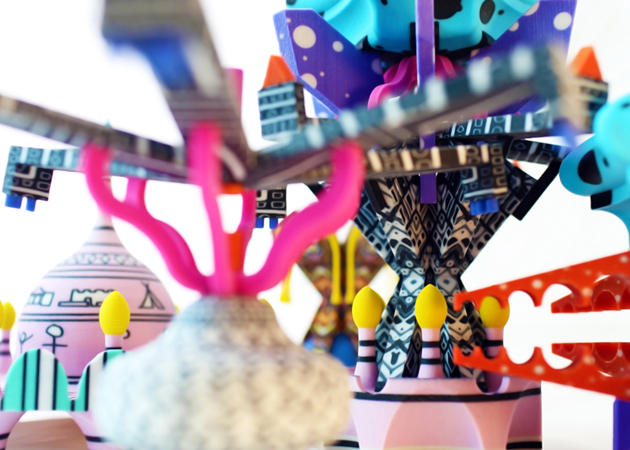
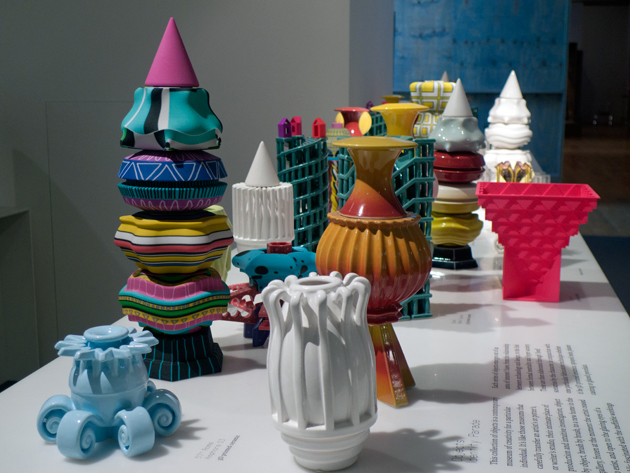
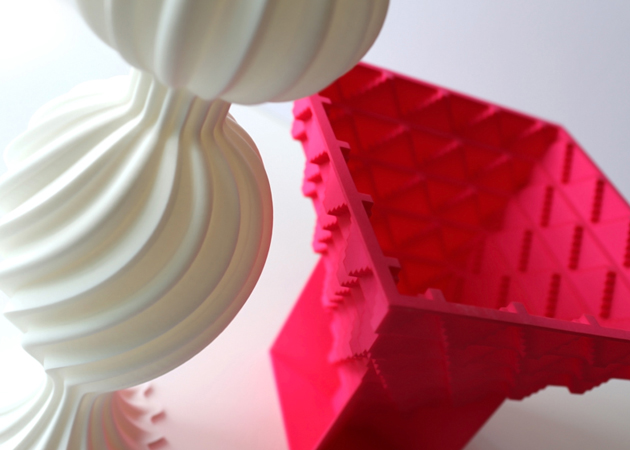
Nevertheless, what is even more remarkable is the understated attitude that Furman’s works demonstrate from the point of view of technological development. In fact, his vessels alternate the use of traditional cast with that of 3D-printing technologies (such as nylon laser-sintering and 3D-printing) with very homogeneous results: at first sight, it is basically impossible – also thanks to the hand painted cladding- to recognize which of the two techniques has been used. Thus, technology seems to be once again a critical tool to express new aesthetics: only the use of 3D-printing techniques, for instance, offers the chance to recall Maurits Cornelis Escher’s world and his impossible feats of architecture. Then, it’s up to colours and patterns to strengthen what morphologies have already suggested: a dizzy but exalting state of mind.
